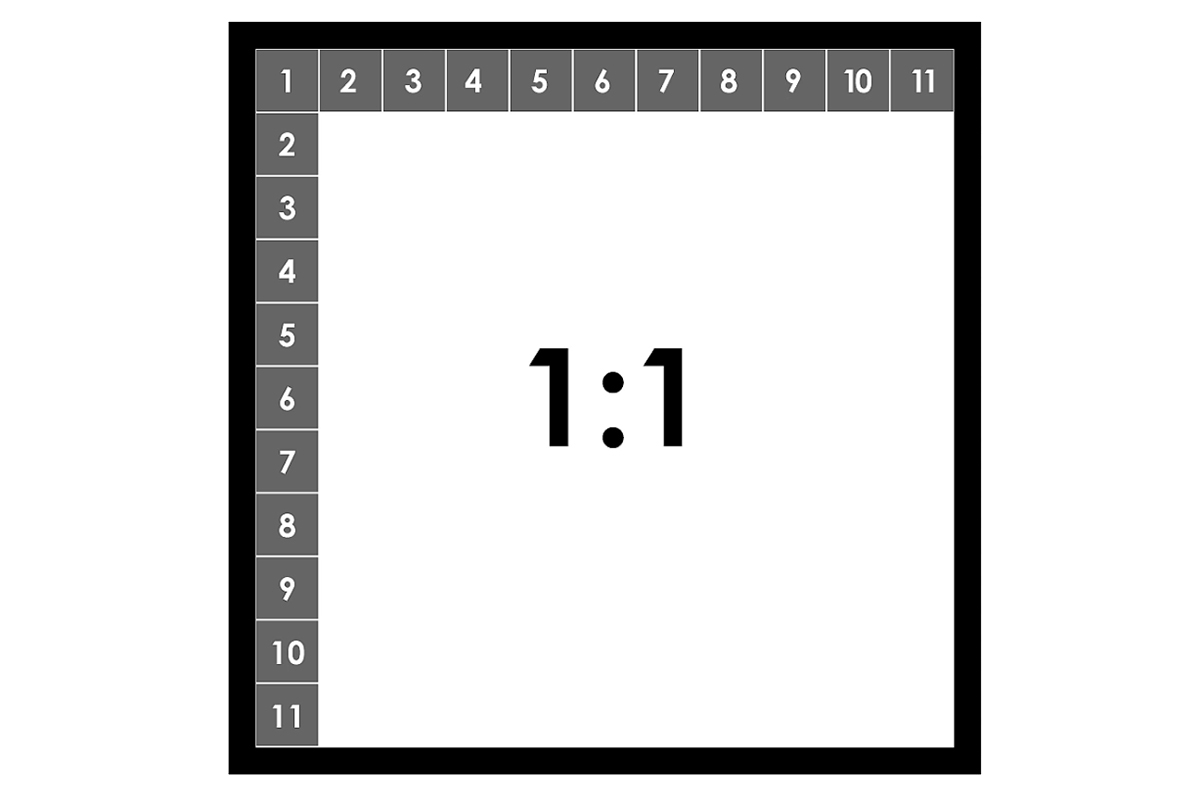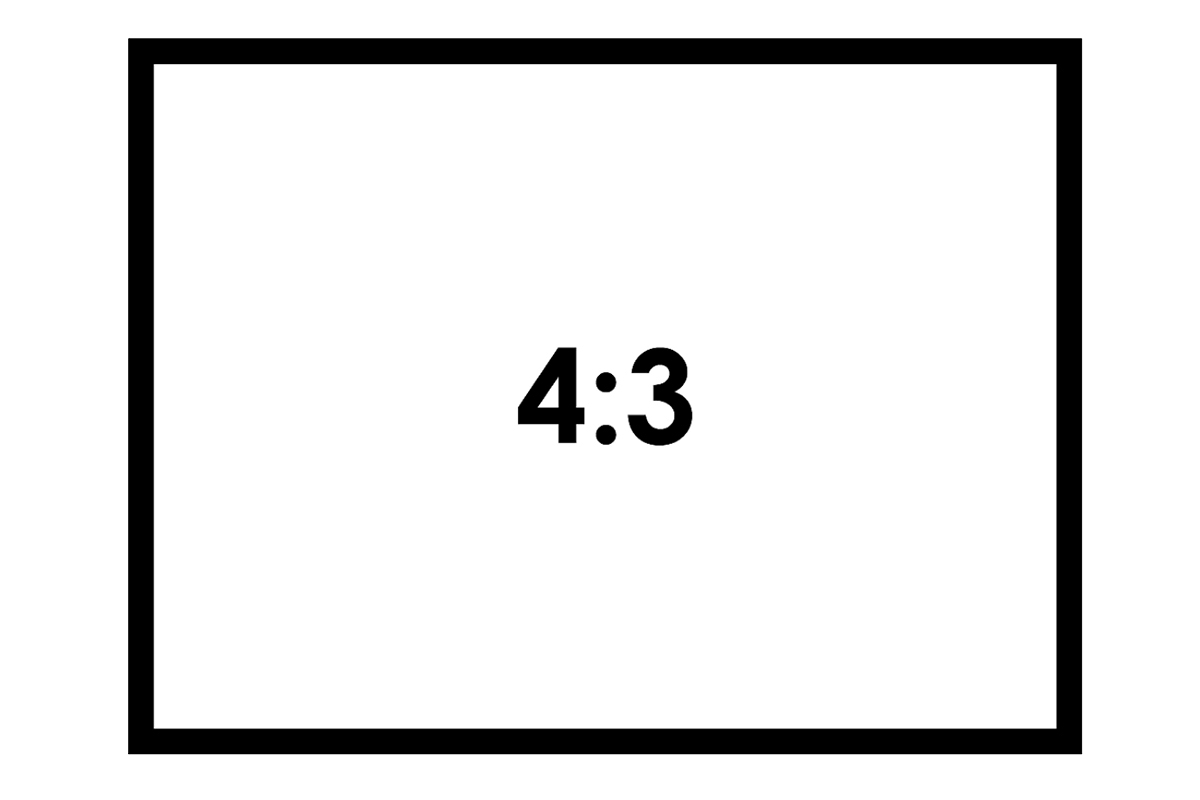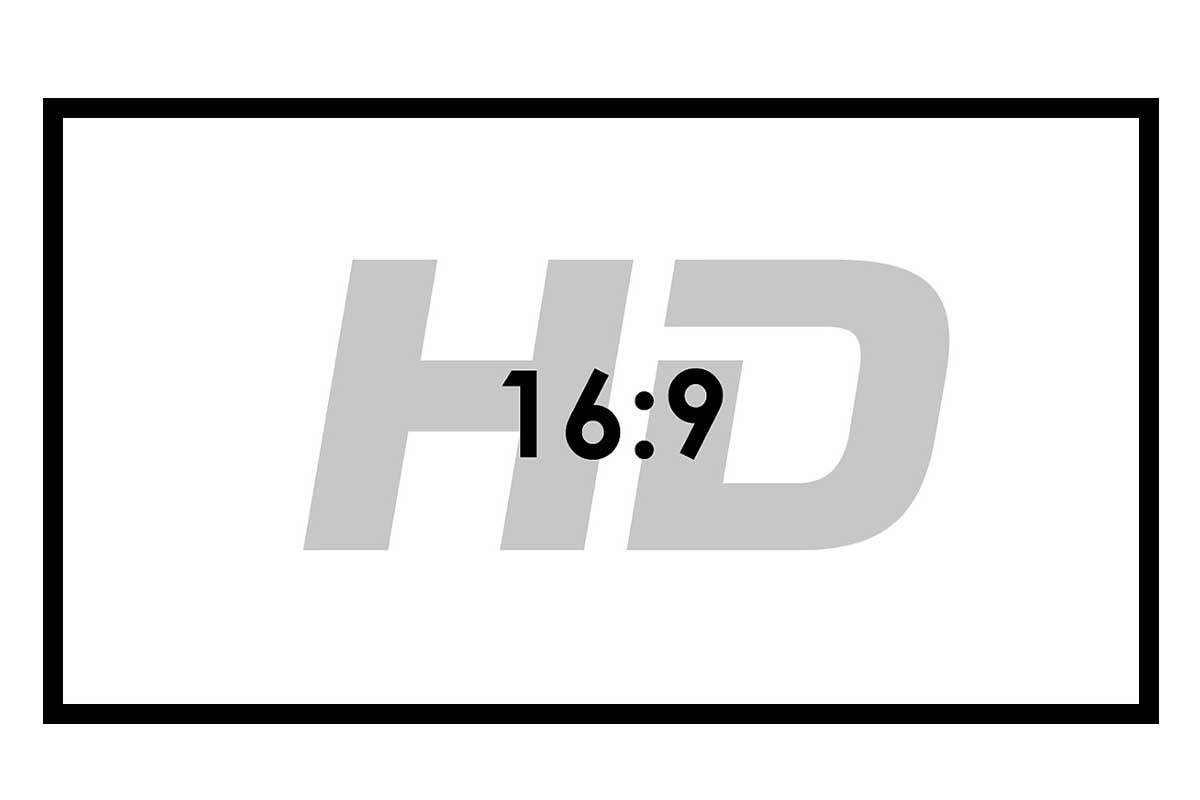Understanding Aspect Ratio
What is Aspect Ratio?
You’ll often hear home theater and front projection enthusiasts refer to it as 4:3, 16:9 or 2.35:1, but what does this mean?
Aspect Ratio refers to the relative shape of the viewing area or screen based on a ratio of width to height.
For example; a 1:1 aspect ratio means that for every 1 unit of horizontal measurement, there is 1 equal unit of vertical measurement. Likewise, a 4:3 aspect ratio means that for every 3 units of measure for height, there will be 4 equal units of measure for width.
See more Screen Terminology
The most common question is “What screen should I get for my projector?”
The easy answer is “The same format your projector has.” A “format” or “aspect ratio” is the actual shape of your screen and this variety exists to suit a multitude of needs. The “native” aspect ratio is the actual format your projector was built to feature. Although most projectors have variable aspect ratio settings, the pixel settings of a native format will always assure the best performance levels. Here is a list of the most common aspect ratios along with brief descriptions and recommendations on what projectors are best with what screens.

1.0 to 1.0 or 1:1 – A 1:1 aspect ratio provides a perfectly squared screen format for overhead projectors (OHP) and is commonly used in Educational/Classroom environments. Choose this screen format if you are using a native SVGA/XGA Projector and definitely use an OHP or 1:1 slide projector for your presentations.

1.0 to 1.33 or 4:3 – The 4:3 or NTSC aspect ratio matches the same screen shape as the traditional (Non-High Definition) television sets or computer (SVGA, XGA, UXGA) resolution. The dimensions of 4:3 are identical to the field of vision for a pair of human eyes. Despite its longevity, this format is being phased out in favor of 16:9 and 16:10 aspect ratios for tv and projectors in both home add commercial design. Select this format screen if you are using a native SVGA, XGA or UXGA projector for your presentations. This is also ideal for either older or lower cost commercial projectors as they may likely have a native NTSC format.

1.0 to 1.6 or 16:10 – The 16:10 aspect ratio (aka. 8:5) is the most popular aspect ratio for the latest WXGA or WUXGA notebooks and has largely surpassed 4:3 in popularity by gaining up to 90% of that market in 2008. As of late 2012 however, the 16:10 has been losing market share to 16:9 (HDTV) as it is the latter is the typical format of today’s tv programming and video games. Choose the 16:10 screen if you use a native wide screen notebook as your media player or a wide format XGA (UXGA) projector.

1.0 to 1.78 or 16:9 – The 16:9 aspect ratio (aka. 1.78:1 or “HDTV” High Definition Television) was developed by SMPTE as being the geometric mean of the full range of US and European standard aspect ratios at the time. The HDTV format was determined to accommodate high definition performance within the most optimal results in visual perception. Today, it is the most widely used format in television and gaming design. As of 2009, 16:9 is also the most common format in stand-alone monitors. Finding either a residential or even commercial projector in a 16:9 native format is not only easy but likely on today’s projector market.

1.0 to 2.35 or 2.35:1 – The Widescreen Cinemascope format (commonly called the 2.35:1 aspect ratio) has become the established medium for movie theater or “Big Screen Cinema” presentations that may vary from 2.35 to 2.40 and even wider formats. The immersive properties are aesthetically pleasing and especially favored in dedicated home theater installations. This format is ideal for use with widescreen home theater projectors or 16:9 projectors using anamorphic lenses to create the full cinematic effect.
What is the Right Aspect Ratio for you?
| Ratio | Description | Tip |
| 1:1 | This aspect ratio provides a perfectly squared screen format for overhead projectors (OHP) and is commonly used in Educational/Classroom environments. | Choose this format if you are using a native SVGA/XGA Projector and occasionally use an OHP or 1:1 slide projector for your presentations |
| 4:3 | This aspect ratio is the same as a standard television (Non-High Definition) or computer (SVGA, XGA, UXGA) resolution | Select this format screen if you are using a native SVGA, XGA or UXGA projector for your presentations |
| 16:10 | This is the most popular aspect ratio for the latest WXGA or WUXGA notebooks. | Choose the 16:10 screen if you use a native wide screen notebook or wide XGA (UXGA) projector. |
| 16:9 | This is the High Definition Television (HDTV) format and is the most widely used aspect ratio for the latest television designs. | Choose a 16:9 Projection Screen if you are planning to use it with a native 16:9 format projector. |
| 2.35:1 | Widescreen Cinemascope format which is perfect with the new anamorphic lenses on the market today. | Select this 2.35:1 format screen if your application is strictly home theater Cinemascope presentations. 2.35:1 and 16:9 are the most popular format for Home Cinema. (Elite Screens’ VMAX Dual® and VMAX Tension Dual is designed for this application.) |
A 16:9 aspect ratio screen is most common format available today for two reasons.
First, today’s HD broadcasts and home theater cinematic content is mastered in HD, meaning that its aspect ratio is 16:9. Second, 16:9 can accommodate both 4:3 and 2.35:1 aspect ratios with the least amount of masking – aka, those black bars at the sides and bottom of the screen.



For more help on How to Select Your Projection Screen please click here.
- Please also take a look at our Tech Tip of the Month articles on Calculating your Screen Dimensions.
- Front Projection Tip of the Month: October – Calculating your Screen Dimensions (Part 1) (Click Here)
- Front Projection Tip of the Month: November – Calculating your Screen Dimensions (Part 2) (Click Here)
